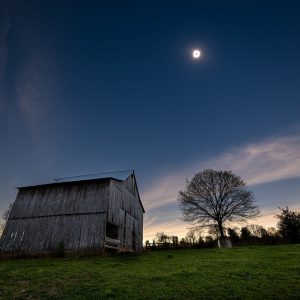
The Music of the South: Exploring Roots, Rhythms, and Reflections
The American South. A region steeped in history, painted with vibrant landscapes, and echoing with a musical heritage as rich and complex as its people. From the mournful wail of blues to the joyous bounce of zydeco, the South’s musical tapestry is woven from threads of African, European, and Indigenous traditions, resulting in a sound uniquely its own. This exploration delves into the heart of Southern music, tracing its roots, analyzing its rhythms, and reflecting on its enduring legacy.
I. The Genesis of Southern Sound: A Melting Pot of Influences
The South’s musical identity wasn’t born overnight. It’s a narrative etched in the sweat and struggle, the joy and sorrow, of generations. The foundation lies in the forced migration of enslaved Africans, who brought with them intricate musical traditions – call-and-response patterns, polyrhythms, and a deep emotional expressiveness. These elements, infused with the folk melodies and hymns of European settlers and the indigenous musical practices of Native American tribes, created a fertile ground for innovation. The banjo, for instance, a West African instrument, became a cornerstone of Southern musical expression, evolving through various forms, from the plucked strings of bluegrass to the driving rhythms of old-time music.
II. The Blues: A Cry from the Deep South
Born from the hardships of slavery and the post-Reconstruction era, the blues stands as a powerful testament to resilience. Its melancholic melodies, often punctuated by soulful vocals and bluesy guitar riffs, articulated the pain, frustration, and longing of a people striving for freedom and dignity. The Delta blues, with its raw, unadorned sound, stands in stark contrast to the smoother, more polished Chicago blues that emerged later. Each style, however, carries the unmistakable mark of a deep emotional wellspring.
| Blues Style | Defining Characteristic | Key Artists |
|---|---|---|
| Delta Blues | Raw, visceral, acoustic | Robert Johnson, Son House |
| Chicago Blues | Urbanized, amplified | Muddy Waters, B.B. King |
| Piedmont Blues | Fingerstyle guitar prominent | Blind Blake, Reverend Gary Davis |
III. Beyond the Blues: A Diverse Musical Landscape
The South’s musical panorama extends far beyond the blues. Gospel music, born in Black churches, provides a spiritual counterpoint, filled with soaring vocals and powerful harmonies. Country music, with its storytelling lyrics and simple instrumentation, reflects the rural life and working-class struggles of both Black and white Southerners. Cajun and zydeco music, vibrant expressions of Louisiana’s French heritage, inject a joyous energy with their accordion-driven melodies and upbeat tempos. Bluegrass, born in the Appalachian Mountains, features fast-paced instrumental work and close harmonies, reflecting a unique blend of Scottish, Irish, and English musical traditions.
IV. The Civil Rights Movement and Musical Activism
The Civil Rights Movement profoundly impacted Southern music. Songs of protest and hope became anthems of change, fueling the fight for equality. Artists like Nina Simone, Sam Cooke, and Aretha Franklin used their voices to articulate the struggle, their music becoming powerful tools for social activism. This era saw a convergence of genres – gospel, blues, and soul – as artists harnessed the power of music to inspire and galvanize.
V. Southern Music Today: A Legacy Reimagined
Today, the music of the South continues to evolve, incorporating contemporary influences while retaining its core essence. Southern rock, with its blend of blues, country, and rock and roll, achieved international acclaim. Contemporary artists are building on this legacy, blending genres and exploring new sonic territories. The South’s musical heritage is not simply a collection of songs; it’s a living, breathing entity, constantly adapting and reinventing itself.
VI. Conclusion: An Enduring Legacy
The music of the South is more than just a genre; it’s a testament to the resilience, creativity, and cultural richness of a region shaped by complex histories and diverse influences. From the soulful cries of the blues to the celebratory rhythms of zydeco, Southern music continues to resonate globally, a powerful testament to its enduring legacy. Its influence can be heard in countless musical styles across the world, proving its timeless relevance and its powerful ability to reflect the human experience. Its narrative is a journey through struggle, triumph, and cultural fusion – a journey well worth taking.

Additional Information
The Music of the South: A Deeper Dive into Roots, Rhythms, and Reflections
The overarching theme of “The Music of the South” – a hypothetical article we’re expanding upon – necessitates a nuanced exploration beyond surface-level observations. A truly comprehensive analysis must consider the complex interplay of cultural influences, historical events, and socio-economic factors that shaped the diverse musical landscape of the Southern United States.
I. Beyond the Stereotypes: Unpacking “Southern” Music:
The term “Southern music” itself is a broad generalization. It’s crucial to avoid monolithic interpretations and instead acknowledge the distinct regional variations and subgenres. For example, the blues of the Mississippi Delta differ significantly from the Appalachian folk traditions of Kentucky and Virginia, which in turn differ drastically from the zydeco of Louisiana or the gospel music that flourished across the region.
-
Regional Variations: A comparative analysis of instrumentation, vocal styles, and lyrical themes across these regions provides crucial insight. For instance, the prevalence of slide guitar in Delta blues contrasts sharply with the banjo’s centrality in Appalachian music. The rhythmic complexities of zydeco reflect its West African and Creole influences, contrasting with the call-and-response structure prevalent in gospel. Detailed studies comparing specific musical elements across regions could reveal fascinating patterns and migration routes of musical styles.
-
The Influence of Migration and Diaspora: The Great Migration of African Americans from the rural South to northern cities significantly impacted both Southern and Northern musical landscapes. While blues and gospel traveled northward, artists like Bessie Smith and Louis Armstrong also integrated Southern musical styles into broader American genres. Analyzing the impact of this exchange is vital.
II. The Socio-Political Context:
Southern music isn’t solely an artistic expression; it’s deeply intertwined with the region’s history of slavery, segregation, and the Civil Rights Movement.
-
The Blues as Social Commentary: The blues, originating from the experiences of enslaved and post-slavery African Americans, served as a powerful means of expressing hardship, resilience, and resistance. Analyzing specific blues lyrics reveals the social and economic struggles faced by the community. For instance, songs dealing with sharecropping or racial injustice offer direct insights into the lived experiences of that time.
-
Gospel Music and Spiritual Resistance: Gospel music provided solace and spiritual strength during times of oppression. The fervent emotionality and communal nature of gospel services functioned as a form of resistance, fostering a sense of unity and hope amidst adversity. A study of the evolution of gospel’s lyrical content could reveal shifting social attitudes and the changing roles of the Black church.
-
Country Music and its Complex Heritage: Country music, often considered a quintessential Southern genre, has a complex history intertwined with both white and Black musical traditions. Analyzing the appropriation and evolution of African American musical influences in early country music requires a critical lens, acknowledging the problematic aspects of cultural appropriation while recognizing the undeniable musical cross-pollination.
III. Contemporary Southern Music and its Legacy:
Southern music continues to evolve and influence contemporary artists.
-
The Southern Rock Phenomenon: The rise of Southern rock in the 1970s, with bands like Lynyrd Skynyrd and the Allman Brothers Band, demonstrated the enduring appeal of Southern musical styles. Analyzing the fusion of blues, country, and rock elements reveals the ongoing process of musical synthesis.
-
Contemporary Artists and the Southern Sound: Contemporary artists continue to draw inspiration from Southern musical traditions. Analyzing the work of modern artists who incorporate elements of blues, gospel, or country provides a snapshot of the enduring legacy of Southern music. Examining how these artists reinterpret traditional styles through a modern lens offers valuable insights into the ongoing evolution of the genre.
IV. Quantitative Analysis (Potential):
A truly enriching study might incorporate quantitative data, where possible. This could involve:
- Analyzing Billboard chart performance: Tracking the success of Southern artists over time can reveal trends and shifts in popularity.
- Studying music sales figures: This provides further insights into the commercial success of different Southern music genres.
- Examining the representation of Southern music in popular culture: This might involve analyzing film soundtracks, television shows, and video games featuring Southern music.
In conclusion, a deeper analysis of “The Music of the South” demands a multi-faceted approach, encompassing regional variations, socio-political context, historical evolution, and contemporary manifestations. By moving beyond simplistic generalizations and employing both qualitative and quantitative methods, we can arrive at a richer and more nuanced understanding of this vibrant and complex musical heritage.






